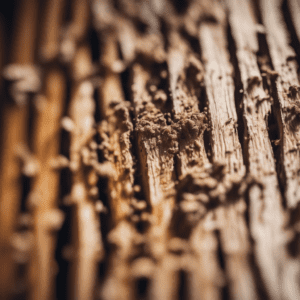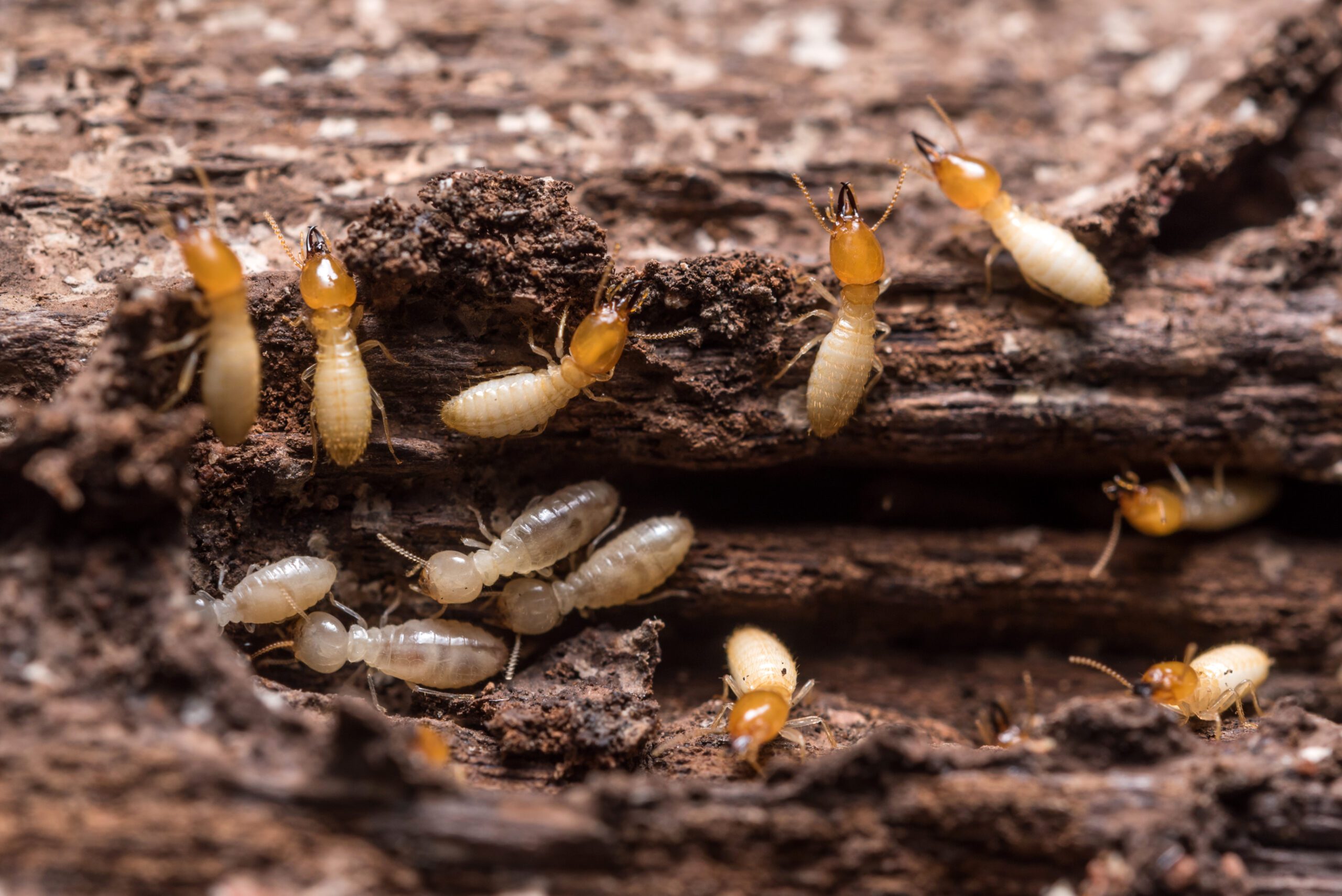If you've been noticing unexpected damage around your house, it might be time to consider a less-than-welcome possibility: termites. These tiny invaders can create significant disruptions and costly damage without you even realizing it. High water levels and dense foliage make termites in Alexandria a major concern for homeowners.
So, how can you tell if you're playing host to these destructive pests? From strange sounds in your walls to the discovery of unusual insect activity, we'll guide you through the 10 tell-tale signs of a termite invasion.
But remember, how to identify termites in the house is only the first step, you'll also need to know what to do next.
Identifying Termite Damage
Recognizing termite damage in your home early on can save you from extensive repairs down the line. If you're serious about mastering the art of termite detection, you've got to know what to look out for. So, let's dive in.

Secondly, you might spot what seems like sawdust around your house. This 'sawdust' is termite droppings, known as frass. It's a clear sign that termites are present and feasting somewhere nearby. It might seem like a small detail, but it's a crucial one in termite detection.
Next, keep an eye out for mud tubes. Termites build these pencil-sized tunnels as a safe path from their colony to their food source house. If you come across these muddy structures on your walls or foundation, it's a sure sign you've got a termite problem.
Noises and Sounds of Termites
While visual signs are key, you shouldn't underestimate the importance of using your ears; often, the sounds termites make can alert you to their presence. These pests are surprisingly noisy, particularly when they're in large numbers. Consequently, staying attuned to the unique sounds termites produce can give you an edge in early detection.
One of the most common sounds you'll hear is a quiet clicking noise. This sound is produced when soldier termites tap their heads against the wood or shake their bodies. They do this to signal danger to the rest of the colony. If you place your ear close to an infested area, you're likely to hear this distinct, rhythmic clicking.
In addition to the clicking, you might also hear a paper-like rustling sound. This noise is a consequence of worker termites, the ones who do most of the chewing, as they tunnel through the wood. They're voracious eaters and can be quite loud when they're hard at work. This sound is often likened to the rustling of crumpled paper or the sound of tiny, sharp claws on a hard surface.
Moreover, you may hear a hollow sound when you tap on a wood surface infested by termites. As these insects consume wood from the inside out, they leave behind a thin veneer of timber or paint. When you knock or tap on an area like this, it won't sound solid.
Presence of Termite Droppings
Spotting termite droppings in your home can be a clear indication of an infestation. These droppings, also known as frass, are often the first physical sign that termites are present. They aren't always easy to identify, so you've got to know what you're looking for.
Termite frass typically looks like small, granular pellets. Their color varies depending on the type of wood the termites have been eating, but it's usually dark, ranging from dark brown to black. They're often found in piles, and these piles can be a sign that there's a termite nest nearby.
If you're seeing small, dark, pellet-like droppings around your home, particularly near wood, it's time to investigate further. But don't just rely on your eyes. Use a flashlight to examine dark corners and crevices, and gloves to probe in areas where the droppings are found. You might discover hidden termite galleries, which are tunnels made by termites in the wood.
However, not all termites leave visible droppings. Subterranean termites, for instance, use their feces along with soil and saliva to build their nests. So, the absence of droppings doesn't necessarily mean you're in the clear.
Identifying termite droppings is an important step in detecting an infestation. If you're uncertain or if you've found evidence of frass, it's best to contact a professional pest control service. They'll have the expertise to confirm whether you're dealing with termites and recommend the appropriate course of action. Don't ignore these signs, as unchecked termite activity can cause significant damage to your home.
Unusual Activity of Winged Insects
If you notice swarms of flying insects, especially near sources of light in your home, you're likely dealing with termite alates or winged termites. These insects are a surefire sign that a termite colony is maturing nearby. Don't confuse them with ants though. Winged termites have straight antennae, a waist that's not pinched, and their wings are equal in length.
When these alates take flight, it's usually to start a new colony. They're attracted to light, so you'll often find them near windows, doors, and light fixtures. If you're seeing a large number of these insects inside your home, it's a serious indication of a termite infestation. Remember, these insects aren't just annoying; they're destructive. They can cause significant damage to your home if left unchecked.
To deal with this situation, you'll need to take immediate action. First, try to collect a few of the insects for identification. This will help in determining the species of termite you're dealing with. Next, contact a pest control expert. They're equipped with the tools and knowledge necessary to effectively deal with your termite problem.
Mud Tubes and Termite Nests
Another telltale sign of a termite infestation is the presence of mud tubes and nests in your home. Termites are industrious creatures that construct these structures for movement and habitation. Understanding these signs will equip you with the knowledge to detect an infestation early.
Mud tubes are about the width of a pencil, and you'll typically find them where the ground meets your house or along walls, ceilings, and crawl spaces. These tubes provide termites with a humid, dark, and safe passage between their food source and their nest. They're essentially termite highways. If you discover these structures in your home, it's a clear sign you're dealing with a termite problem.
Termite nests, on the other hand, are a bit trickier to locate. Some species build their nests underground, while others prefer the comfort of your home's woodwork. If you're dealing with drywood termites, you'll find their nests within the wood they're consuming. These nests often resemble piles of sawdust or small pellets, and they're usually accompanied by tiny holes in the wood.
You should also be aware of arboreal nests, which are typically built by tropical termite species. These nests are found in tree trunks or branches and resemble large mounds of dirt or mud.
Conclusion
So, you've learned the warning signs. If you spot termite damage, hear suspicious noises, discover droppings, see an influx of winged insects, or find mud tubes and nests, you've likely got termites.
It's crucial to act quickly. Don't put it off. Get your home inspected and treated right away. Remember, it's not just about preserving your property, it's about ensuring the safety of your home and everyone in it.
Whether you are worried you have termites in your home, want to protect against termites, or just want a termite inspection for peace of mind, My Pest Pros can help. Call us for your Alexandria pest control at 703-665-4455 or Schedule a treatment online.
